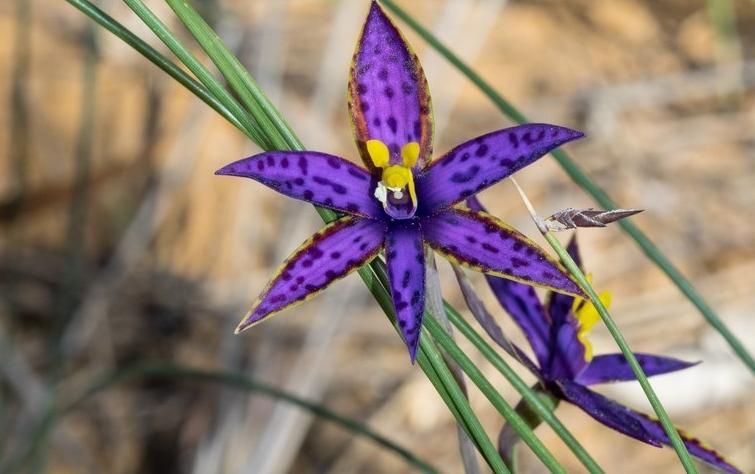Employees at Tozer’s Bush Camp northwest of Bremer Bay in Western Australia spotted a blooming Thelymitra variegata orchid, also known as the Queen of Sheba. This species is considered one of the rarest and least studied orchids in Australia, it is found only in a few small areas in the south of Western Australia. The plant blooms every 7-10 years. The flowering was reported by the Australian television and radio corporation ABC.
The orchid was first formally described in 1840 by the English botanist and orchid expert John Lindley, who gave it the name Macdonaldia variegata and published a description in An Outline of the Vegetation of the Swan River Colony. In 1865, the German geographer and botanist Ferdinand von Müller, who worked in Australia, changed the name of the species to Thelymitra variegata and published a description of the plant in Fragments of the Phytogeography of Australia.
Orchid flowers, which can be up to five on one stem, are impressive with a combination of bright shades of purple, blue and yellow. The pattern formed by dark spots on the petals of an orchid is unique for each specimen. Botanist Kevin Thiele says that this quality is due to the breeding strategy of this species. While most insect-pollinated flowering plants offer rewards to their pollinators, such as sweet nectar, the orchids of the genus Thelymitra, to which the Queen of Sheba belongs, offer no reward to insects. They simply imitate the flowers of the lily or buzz families in order to trick the pollinating insect into their presence. But insects are able to remember the type of flowers where they did not receive treats, therefore, in order not to lose pollinators, orchids must modify their color.
This property of the genus makes it difficult for botanists who have to identify orchid species, but also attracts many flower lovers and nature photographers who come from all over the world to Western Australia to admire the “Queen of Sheba” and her relatives.

